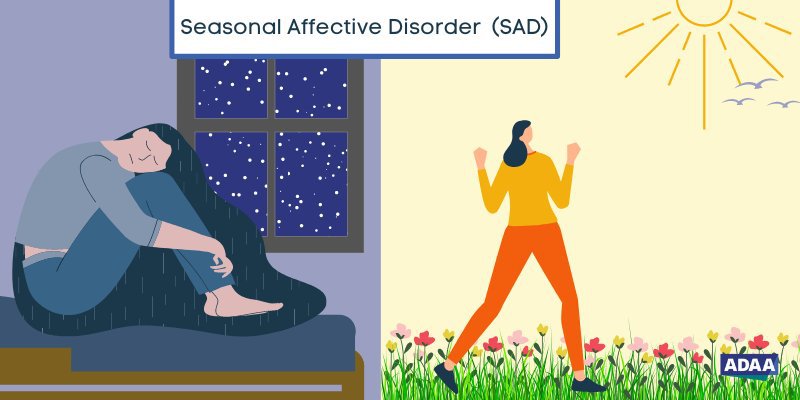As the days shorten and the vibrant greens of summer yield to the muted hues of autumn, many find themselves grappling with more than just a preference for pumpkin spice lattes. For a significant portion of the population, this seasonal transition ushers in a noticeable dip in mood and energy, commonly known as Seasonal Affective Disorder (SAD), or more colloquially, “the autumn blues.” But what if this annual descent into gloom wasn`t an inevitable fate? What if there were a methodical approach to maintain mental equilibrium even as the world outside dims?
- The Science Behind the Seasonal Sigh
- Strategic Countermeasures: A Proactive Approach to Well-being
- 1. Maximizing Your Luminary Intake: The Light Prescription
- 2. The Kinetic Cure: Exercise as an Antidepressant
- 3. Culinary Comforts: Nurturing Your Mood Through Nutrition
- 4. The Sanctuary of Sleep: Reclaiming Your Rest
- 5. Maintain Engagement and Connection
- When Professional Guidance Becomes Prudent
The Science Behind the Seasonal Sigh
Before we delve into prevention, it is prudent to understand the adversary. SAD isn`t merely a matter of disliking cold weather. It`s a legitimate mood disorder linked to the reduced exposure to natural light during the shorter days of autumn and winter. This lack of light can disrupt our internal clock (circadian rhythm), leading to a chemical imbalance in the brain. Specifically:
- Serotonin Levels: Sunlight helps regulate serotonin, a neurotransmitter associated with mood. Less sunlight means lower serotonin, which can lead to feelings of depression.
- Melatonin Production: Darkness stimulates melatonin production, which regulates sleep. In shorter days, your body might produce melatonin earlier or later than usual, leading to lethargy and sleep disruptions.
- Vitamin D Deficiency: Sunlight is crucial for Vitamin D synthesis. Lower levels of Vitamin D are increasingly linked to depressive symptoms and overall energy levels.
Understanding these mechanisms isn`t an invitation for fatalism; rather, it`s a strategic advantage. If diminished light is part of the problem, targeted light exposure and lifestyle adjustments might just be part of the solution.
Strategic Countermeasures: A Proactive Approach to Well-being
Preventing SAD is less about fighting a battle and more about cultivating resilience. It`s a commitment to certain practices that bolster your mental and physical well-being. Think of it as a meticulously engineered defense system against the encroaching shadows of seasonal change.
1. Maximizing Your Luminary Intake: The Light Prescription
This is arguably the cornerstone of SAD prevention. Your mission, should you choose to accept it, is to actively seek out light.
- Morning Light Exposure: Aim for 15-30 minutes of natural light exposure within the first hour of waking. Open curtains, step outside, or position your workspace near a window. Even on cloudy days, outdoor light is significantly brighter than typical indoor illumination.
- Light Therapy Lamps: For those in regions with particularly dim winters, a light therapy lamp (10,000 lux) can be a powerful ally. These devices mimic natural sunlight and can help reset your circadian rhythm and boost serotonin. Consult a healthcare professional before incorporating one, as with any therapeutic device.
- Outdoor Activity: Combine light exposure with physical activity for a double dose of benefit. Even a short walk during your lunch break can make a noticeable difference.
2. The Kinetic Cure: Exercise as an Antidepressant
While the allure of a warm blanket and a Netflix binge is undeniably strong when energy dips, regular physical activity remains one of the most potent mood regulators available. It`s a natural antidepressant, no prescription required.
- Endorphin Release: Exercise triggers the release of endorphins, neurochemicals that promote feelings of well-being and act as natural pain relievers.
- Stress Reduction: Physical activity is an excellent stress reliever, burning off nervous energy and helping to calm an overactive mind.
- Improved Sleep: Regular exercise can significantly improve sleep quality, which is often disturbed during periods of SAD.
The key is consistency, not necessarily intensity. A brisk 30-minute walk most days of the week can be profoundly effective. If the gym feels like a monumental task, start small. Dance in your living room. Take the stairs. Every movement counts.
3. Culinary Comforts: Nurturing Your Mood Through Nutrition
Your gut is often called your “second brain” for good reason. What you consume directly impacts your brain chemistry and overall mood. Neglecting it is, frankly, a tactical error.
- Balanced Diet: Focus on whole, unprocessed foods. Lean proteins, complex carbohydrates, and plenty of fruits and vegetables provide sustained energy and essential nutrients.
- Omega-3 Fatty Acids: Found in fatty fish (salmon, mackerel), flaxseeds, and walnuts, omega-3s are vital for brain health and have been linked to improved mood.
- Vitamin D-Rich Foods: While sunlight is primary, incorporate fortified milk, cereals, and fatty fish. A supplement might be necessary, but discuss this with your doctor for appropriate dosing.
- Mindful Eating: Avoid excessive sugar and highly processed foods, which can lead to energy crashes and exacerbate mood swings.
4. The Sanctuary of Sleep: Reclaiming Your Rest
A stable sleep schedule is paramount. When days shorten, our internal clocks can become disoriented. Reasserting control over your sleep patterns can provide a foundational stability for your mood.
- Consistent Schedule: Go to bed and wake up at roughly the same time each day, even on weekends. This reinforces your circadian rhythm.
- Optimize Your Sleep Environment: Ensure your bedroom is dark, quiet, and cool. These seemingly minor adjustments can significantly impact sleep quality.
- Pre-Sleep Routine: Wind down before bed with activities like reading, a warm bath, or meditation. Avoid screens and stimulating activities in the hour leading up to sleep.
5. Maintain Engagement and Connection
The inclination to withdraw as the weather cools is a common symptom of SAD. However, social interaction and maintaining a routine are vital counterweights to this tendency.
- Stay Social: Make an effort to connect with friends and family. Even a brief chat or virtual coffee can lift your spirits. Consider group activities or volunteering to broaden your social circle.
- Adhere to a Routine: Structure provides stability. Keep up with hobbies, work, and social engagements. Having plans, even small ones, can prevent a sense of aimlessness and loss of control.
- Embrace the Season: Instead of lamenting the end of summer, find joy in autumn activities. Rake leaves, visit an apple orchard, or enjoy a warm drink by a fireplace. Shifting perspective can be surprisingly powerful and make the seasonal transition feel less like a loss and more like an opportunity.
When Professional Guidance Becomes Prudent
While these proactive measures are highly effective for many, it`s crucial to acknowledge that sometimes, the “autumn blues” can deepen into something more persistent. If symptoms are severe, interfere with your daily life, or if self-help strategies aren`t yielding discernible results, seeking professional assistance is not a sign of weakness but of wisdom. Psychologists, therapists, or general practitioners can offer tailored advice, suggest specific therapies (like Cognitive Behavioral Therapy), or explore medication options if appropriate. There`s no shame in asking for a professional perspective; sometimes, a little expert navigation is exactly what`s needed to steer clear of the emotional shoals.
The shift in seasons is an inevitable cycle, but succumbing to its potential depressive effects is not. By understanding the underlying mechanisms and implementing a disciplined, proactive regimen of light exposure, physical activity, mindful nutrition, consistent sleep, and social engagement, you can effectively re-engineer your autumn experience. Embrace the season, but more importantly, embrace the power of your own well-being. The sun may set earlier, but your inner light doesn`t have to dim.









